Related Research Articles
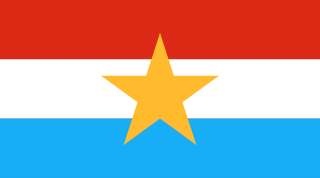
The Tatmadaw, also known as Sit-Tat, is the armed forces of Myanmar. It is administered by the Ministry of Defence and composed of the Myanmar Army, the Myanmar Navy and the Myanmar Air Force. Auxiliary services include the Myanmar Police Force, the Border Guard Forces, the Myanmar Coast Guard, and the People's Militia Units. Since independence in 1948, the Tatmadaw has faced significant ethnic insurgencies, especially in Chin, Kachin, Kayin, Kayah, and Shan states. General Ne Win took control of the country in a 1962 coup d'état, attempting to build an autarkic society called the Burmese Way to Socialism. Following the violent repression of nationwide protests in 1988, the military agreed to free elections in 1990, but ignored the resulting victory of the National League for Democracy and imprisoned its leader Aung San Suu Kyi. The 1990s also saw the escalation of the conflict involving Buddhists and Rohingya Muslims in Rakhine State due to RSO attacks on the Tatmadaw forces, which saw the Rohingya minority facing oppression and, starting in 2017, genocide.

The U.S. Army Medical Command (MEDCOM) is a direct reporting unit of the U.S. Army that formerly provided command and control of the Army's fixed-facility medical, dental, and veterinary treatment facilities, providing preventive care, medical research and development and training institutions. On 1 October 2019, operational and administrative control of all military medical facilities transitioned to the Defense Health Agency.

The South African Military Health Service is the branch of the South African National Defence Force responsible for medical facilities and the training and deployment of all medical personnel within the force. Though unusual, as most national militaries integrate their medical structures into their existing service branches, the SANDF regards this structure as being the most efficient method of providing care and support to the SANDF's personnel.
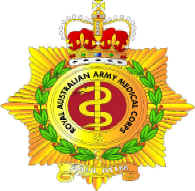
The Royal Australian Army Medical Corps (RAAMC) is the branch of the Australian Army responsible for providing medical care to Army personnel. The AAMC was formed in 1902 through the amalgamation of medical units of the various Australian colonies and was first deployed to South Africa as a small detachment of personnel supporting the Australian Commonwealth Horse during the Second Boer War. The corps has participated in every Australian Army operation since then, including wars and peacekeeping operations. The "Royal" prefix was granted in 1948.
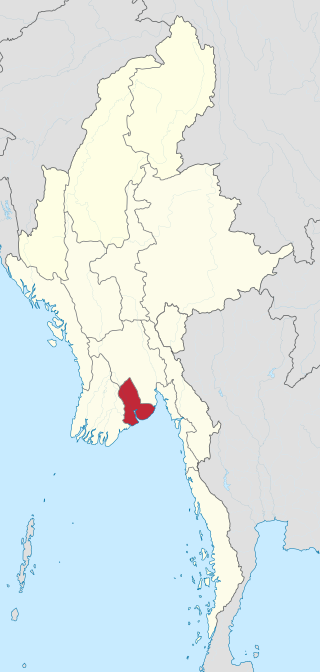
Yangon Region is an administrative region of Myanmar. Located in central Myanmar, the region is bordered by Bago Region to the north and east, the Gulf of Martaban to the south, and Ayeyarwady Region to the west. Yangon Region is dominated by its capital city of Yangon, the former national capital and the largest city in the country. Other important cities are Thanlyin and Twante. The division is the most developed region of the country and the main international gateway. The division measures 10,170 km2 (3,930 sq mi).

The Army Medical Department of the U.S. Army (AMEDD), formerly known as the Army Medical Service (AMS), encompasses the Army's six medical Special Branches. It was established as the "Army Hospital" in July 1775 to coordinate the medical care required by the Continental Army during the Revolutionary War. The AMEDD is led by the Surgeon General of the U.S. Army, a lieutenant general.
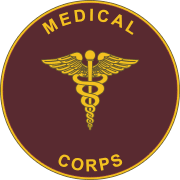
The Medical Corps (MC) of the U.S. Army is a staff corps of the U.S. Army Medical Department (AMEDD) consisting of commissioned medical officers – physicians with either an M.D. or a D.O. degree, at least one year of post-graduate clinical training, and a state medical license.
There are five civil medical universities and one military medical academy in Myanmar (Burma). All medical schools are recognised by Myanmar Medical Council and State Government. They are:

The Myanmar Army is the largest branch of the Tatmadaw, the armed forces of Myanmar, and has the primary responsibility of conducting land-based military operations. The Myanmar Army maintains the second largest active force in Southeast Asia after the People's Army of Vietnam. It has clashed against ethnic and political insurgents since its inception in 1948.
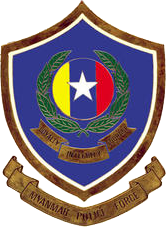
The Myanmar Police Force, formerly the People's Police Force, is the law enforcement agency of Myanmar. It was established in 1964 as an independent department under the Ministry of Home Affairs.

The term military medicine has a number of potential connotations. It may mean:
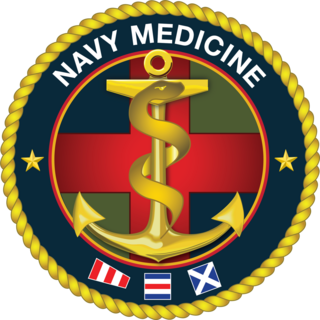
The Bureau of Medicine and Surgery (BUMED) is an agency of the United States Department of the Navy that manages health care activities for the United States Navy and the United States Marine Corps. BUMED operates hospitals and other healthcare facilities as well as laboratories for biomedical research, and trains and manages the Navy's many staff corps related to medicine. Its headquarters is located at the Defense Health Headquarters in Fairfax County, Virginia. BUMED has 41,930 medical personnel and more than a million eligible beneficiaries.

The 1st Health Battalion is a unit of the 2nd Health Brigade. It is headquartered at the Robertson Army Barracks in Darwin. Formally having sub-units located in Darwin, Townsville and Brisbane, the then 1st Close Health Battalion (1CHB) was raised as 1 HB and fell under the command of the reestablished 2nd Health Brigade in 2022; with the existing Sub-Units being absorbed into 4th Health Battalion (Australia), and 2nd Health Battalion (Australia), respectfully. Additionally, a Close Health Unit was founded under the command of the 3rd Health Battalion (Australia), cementing the new capabilities of Joint Health.

Combined Military Hospitals are Pakistan Armed Forces hospitals situated in various cantonments of Pakistan.
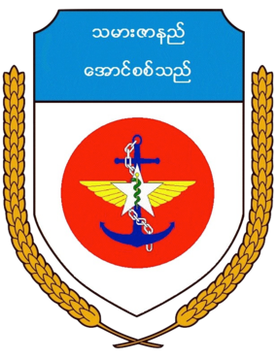
The Defense Services Medical Academy (DSMA), located in Mingaladon, Yangon, is the University of Medicine of the Myanmar Armed Forces. One of the most selective universities in the country, the academy offers M.B., B.S. degree programs. Upon graduation, most DSMA cadets are commissioned with the rank of Lieutenant in the Myanmar Army Medical Corps. The military physicians are to serve the healthcare needs of rural people when they are assigned in the country's remote regions where access to healthcare is poor.

The Army Medical Corps is a specialist corps in the Indian Army, which primarily provides medical services to all Army personnel, serving and veterans, along with their families. Along with the branches in the Indian Navy and Indian Air Force, it forms part of the Armed Forces Medical Services (AFMS). The AFMS consists of more than 70,000 personnel.
The Directorate of Medical Services (DMS) commands the Myanmar Army Medical Corps. The DMS also commands some military academies jointly with other directorates. Currently the Director of DMS is Maj Gen Soe Win. There are one Director, one Deputy Director, two Staff Officers and two Staff Officers in DMS.
The Joint Health Command (JHC) is responsible for the delivery of military medicine and joint healthcare services to Australian Defence Force (ADF) personnel, including military psychiatry and rehabilitation services. The JHC is also responsible for providing strategic health policy, the development of the health preparedness of ADF personnel for operations, and the coordination of health units for deployment in support of operations. JHC is led by the dual-hatted Commander Joint Health and Surgeon General of the ADF.

The Swedish Armed Forces Centre for Defence Medicine is a tri-service military medicine center in the Swedish Armed Forces. Its staff is made up of officers, civilian specialists, group commanders and officer reservists – tasked with ensuring care is provided during peacetime, on international missions, at times of crisis and in combat.
References
- ↑ "Almanac: Myanmar, Republic of the Union of • Military Medicine Worldwide". military-medicine.com. Retrieved 2025-01-16.